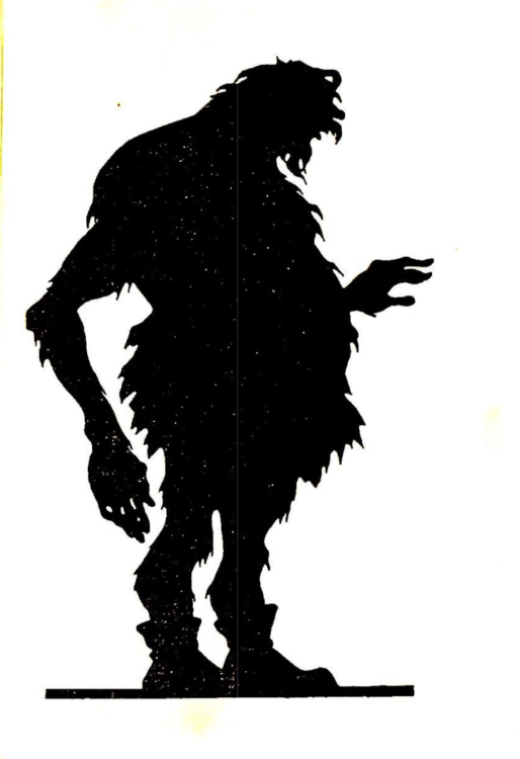
Printed
45 pages
Author(s)
Thors Hammer
When Alexander von Bernus opened his shadow theatre in 1907 in the artistic neighbourhood of Schwabing in Munich, he wished to present a new form of art, which he explicitly connected with the Romantic tradition. This new form of art would be different from the shows of the Chat Noir cabaret in Paris and make better use of the immaterial quality of shadows to venture into the realms of the soul and of dreams. Mysticism pervaded the intellectual and artistic circles of Munich at the beginning of the 20th century, and it had something to do with this project too, since it aimed at “the most metaphysical union of image, poetry and music”. With Alexander von Bernus and illustrator Rolf von Hoerschelmann, Karl Wolfskehl is one of the co-founders of the Schwabinger Schattenspiele; one of his plays, Wolfdietrich und die Rauhe Els, features in the inauguration programme of the theatre.
Karl Wolfskehl wrote three plays for the Schwabinger Schattenspiele. His plays distinguish themselves from the oneiric plays of Alexander von Bernus in their themes (most notably the relation between genders) and a darker and more violent atmosphere. The three plays are rewritings of Nordic myths or oriental tales. In the wake of the influential tradition of philology in German universities and of the new dynamic of scientific orientalism at the beginning of the century, Karl Wolfskehl was, above all, interested in those tales as a scholar and a bibliophile. In Thors Hammer, he uses “Þrym's Poem”, a poem from the Poetic Edda (a collection of poems gathered in an Icelandic manuscript from the 13th century, the main source of knowledge on Scandinavian mythology). This poem tells the story of the theft of Thor’s hammer by the giant Þrym (Thrym), and its recovery thanks to the Gods’ stratagem. Between the end of the 18th and the beginning of the 20th century, this poem was translated around ten times in German. Using this rather short poem of only thirty-two verses as a basis, Karl Wofskehl realises a real dramatic rewriting, and develops the original text with witty dialogues or thrilling monologues that contribute to the individualisation of the mythological characters.
The confrontation between deities and giants inspires Emile Preetorius to create rather big expressive silhouettes, and a very evocative scenery (most notably the set for the kingdom of the polar bears, with its fauna and glaciers).
A god cross-dresses to save his kingdom
A very agitated Thor wakes up: his hammer disappeared during his sleep. He invokes the spirits of air and of light, and asks Loki to go look for it. Loki refuses; Thor loses patience and implores him to do it. Goddess Freyja intervenes; Thor relates his nightmare and the theft of his hammer. Loki mocks the story but finally agrees. He puts on Freyja’s feather dress and flies away.
In the Land of Giants, the sovereign announces the incoming attack on the Land of Gods. Loki arrives, greets him, and mentions the decline of the Land of Gods, as well as Thor’s dismay facing the disappearance of his hammer. The Giant informs him that he has the weapon, but Loki remains sceptical. His doubts vanish when a dolphin emerges from the water with the hammer in its mouth. Loki insists and wants to get it back, and, in return, promises the Giant whatever he wants. As he is in a favourable position, the Giant accepts, on condition that Freyja becomes his wife. He grants the Gods a seven-day delay before declaring war on them.
Back in the kingdom, Loki relates everything to Thor who immediately asks Freyja to accept. She takes offence, but Thor is adamant. To fool the Giant, the old Heimdallr suggests that Thor dress up as a bride and Loki as a bridesmaid, which would allow them to retrieve the hammer when the time comes. Thor is unsure at first, but agrees and praises Heimdallr’s wise words.
Dressed up as women, Thor and Loki arrive in the Land of Giants where they are greeted with a spectacular feast next to the sea, with game meat galore. Loki improvises several lies to explain to the surprised Giant the bride’s gargantuan appetite and scary eyes. Unsuspecting, the Giant asks for the hammer to be brought to seal the union. Thor reveals his identity, and grasps his hammer as a thunderclap resonates. As everyone cheers, he puts an end to the expansion of the haze and glaciers and, to unite the earth and the Gods, he makes a rainbow appear.
First performance
Schwabinger Schattenspiele
Publications and translations
Karl Wolfskehl, Thors Hammer, Munich, Schwabinger Schattenspiele, 1908
